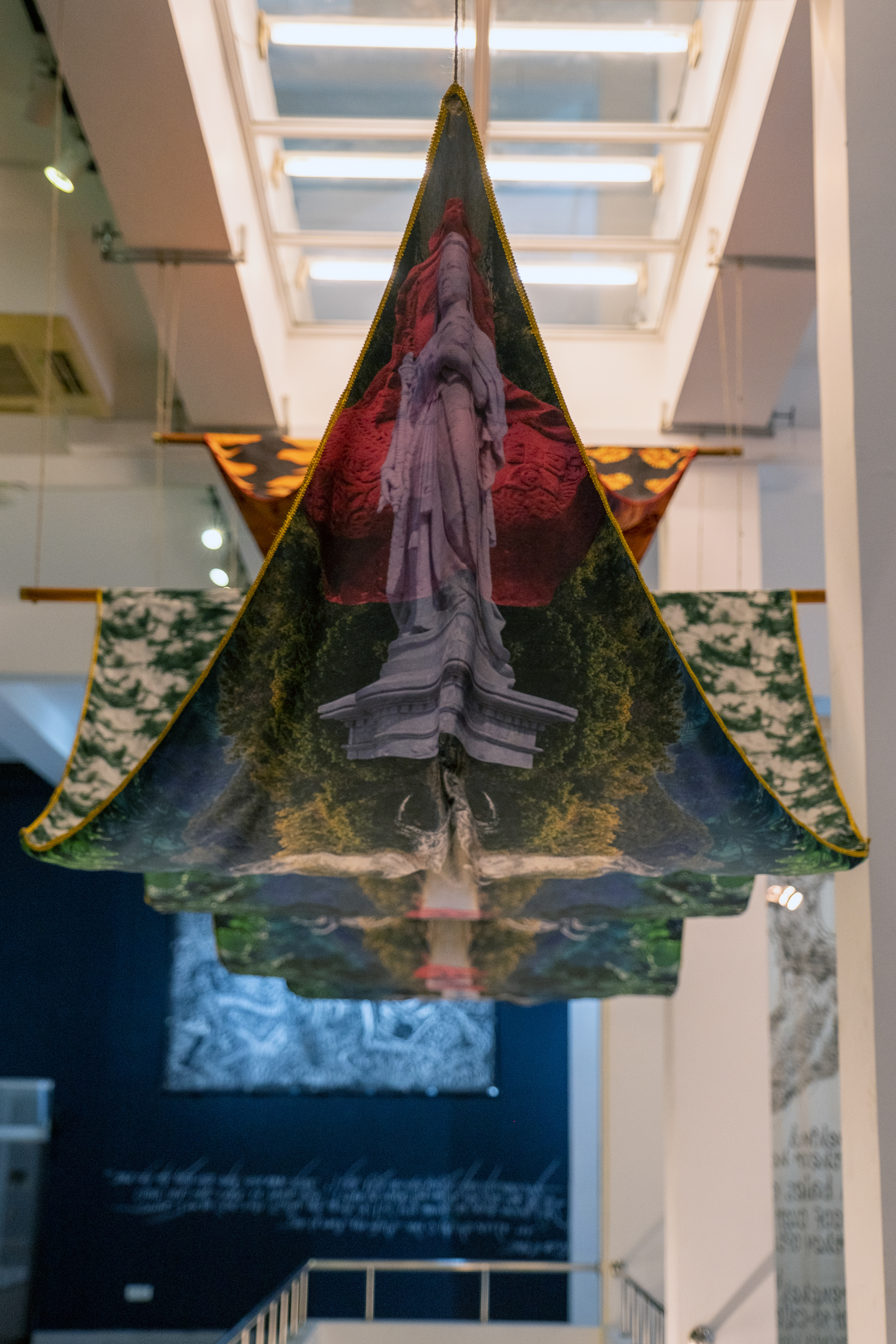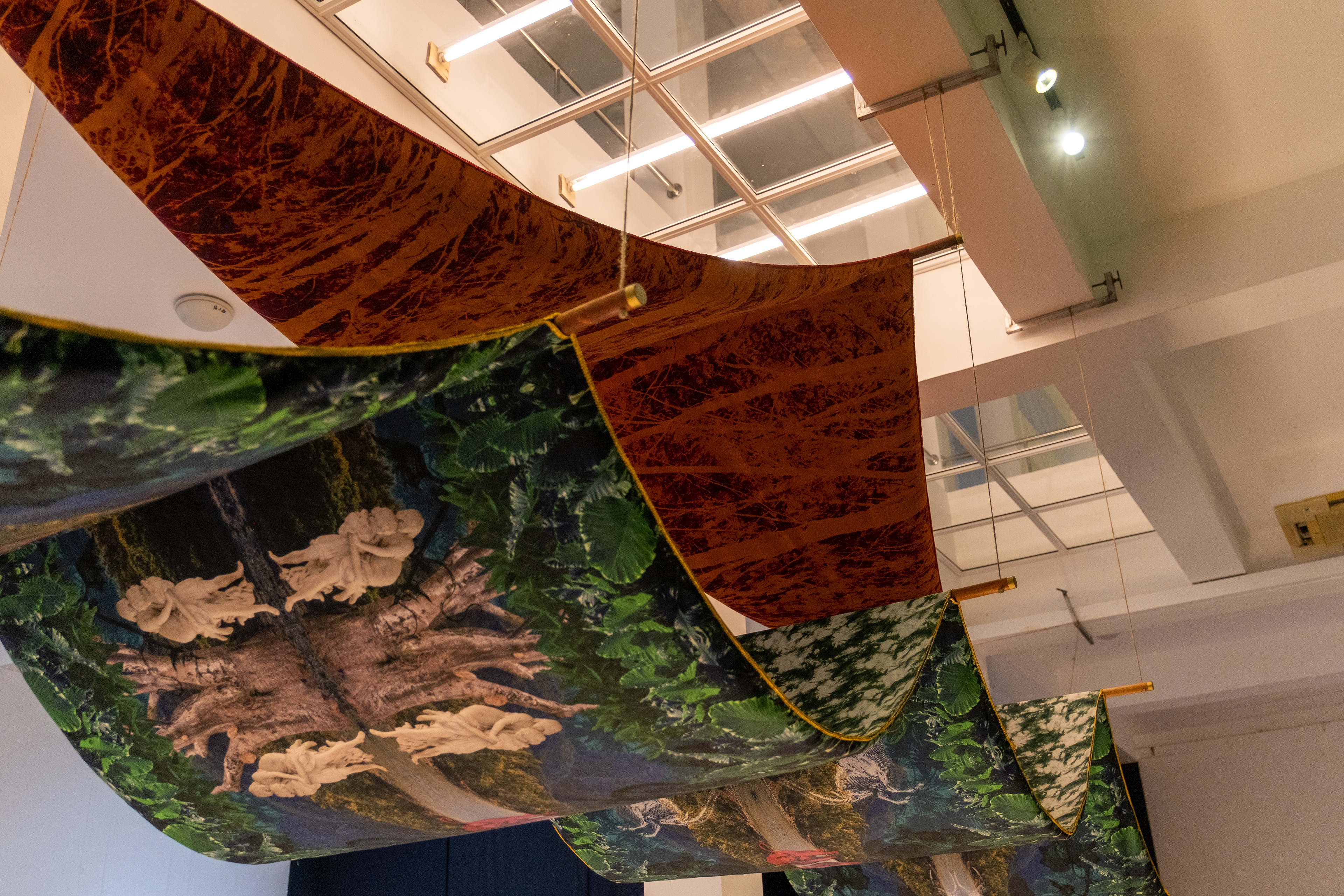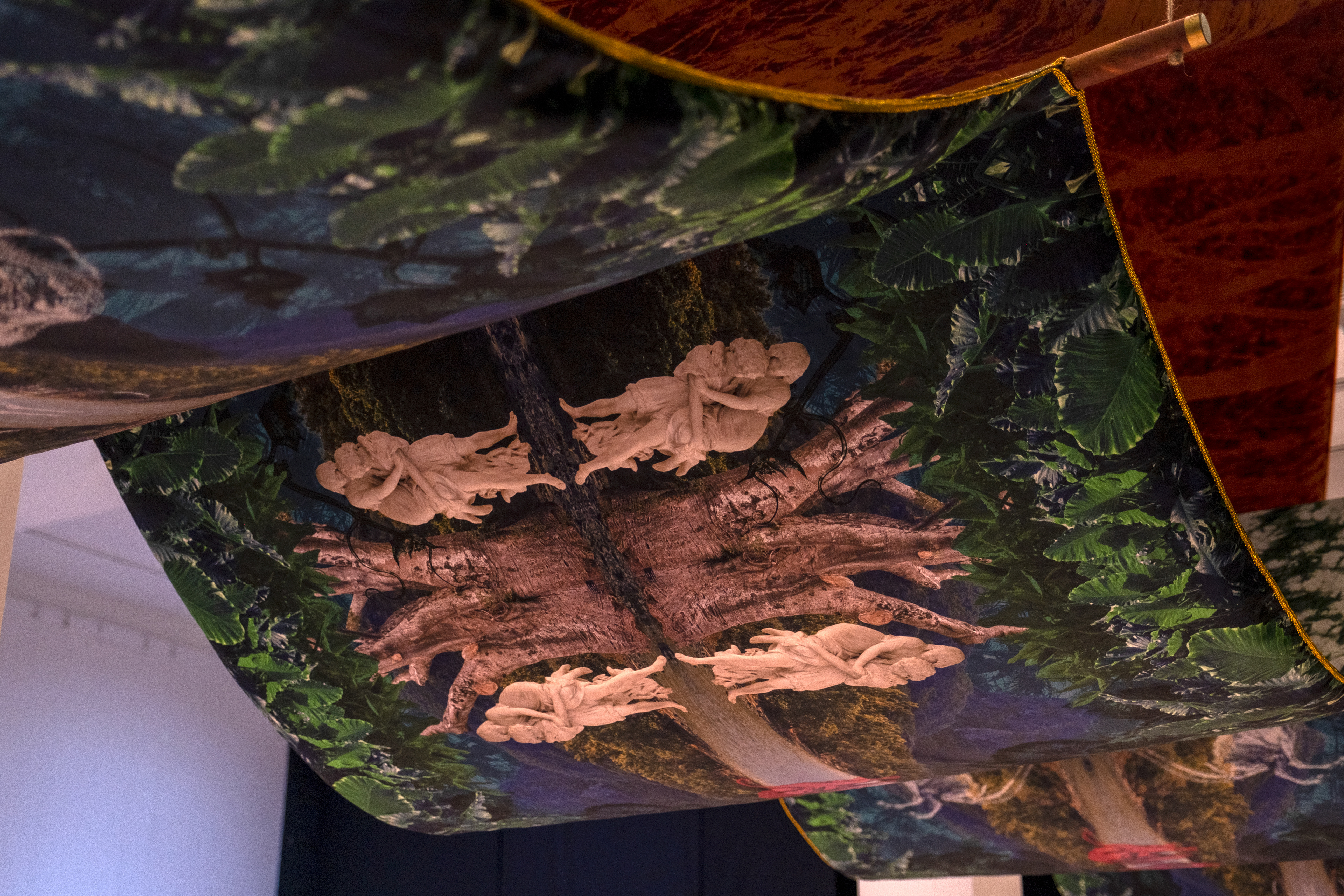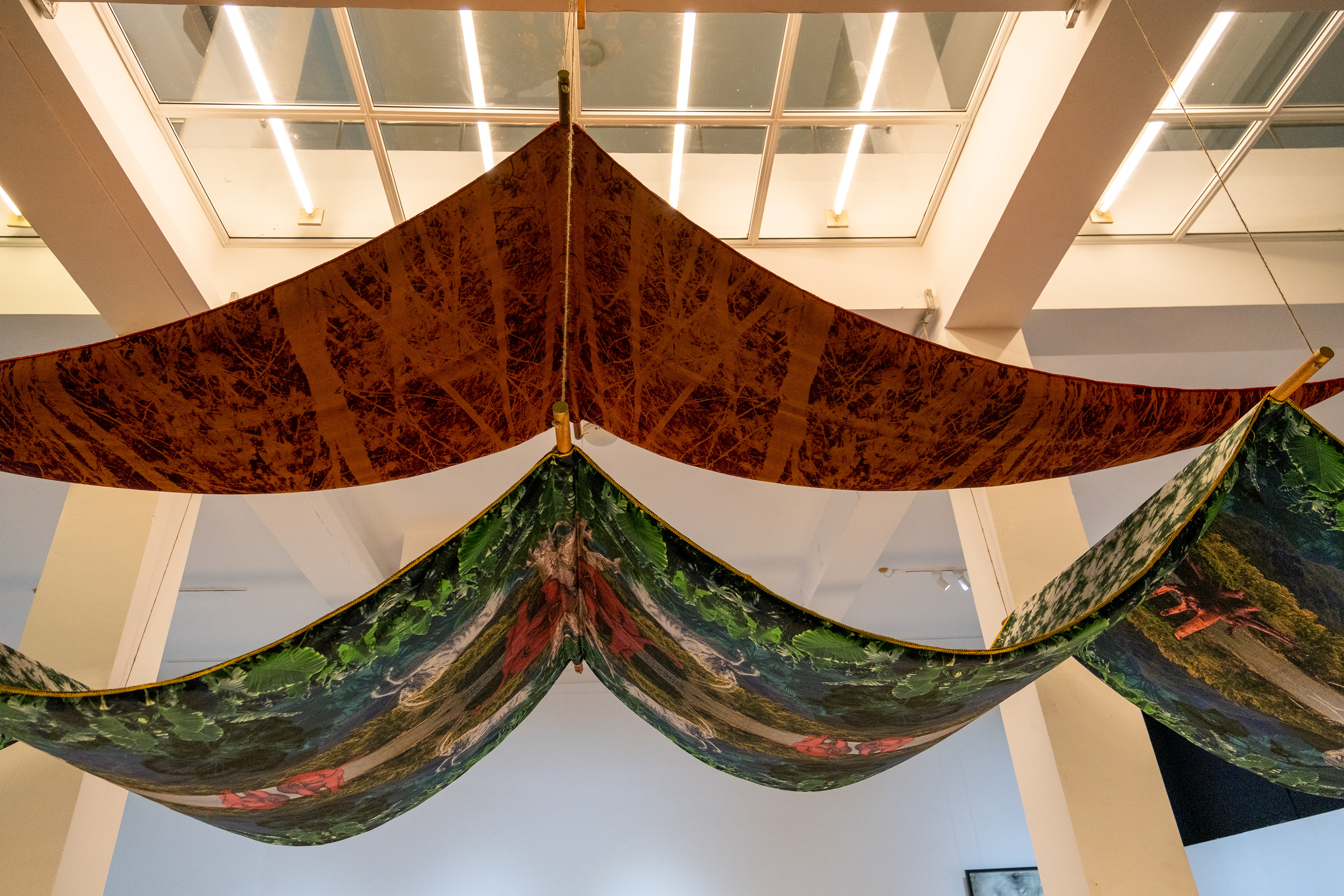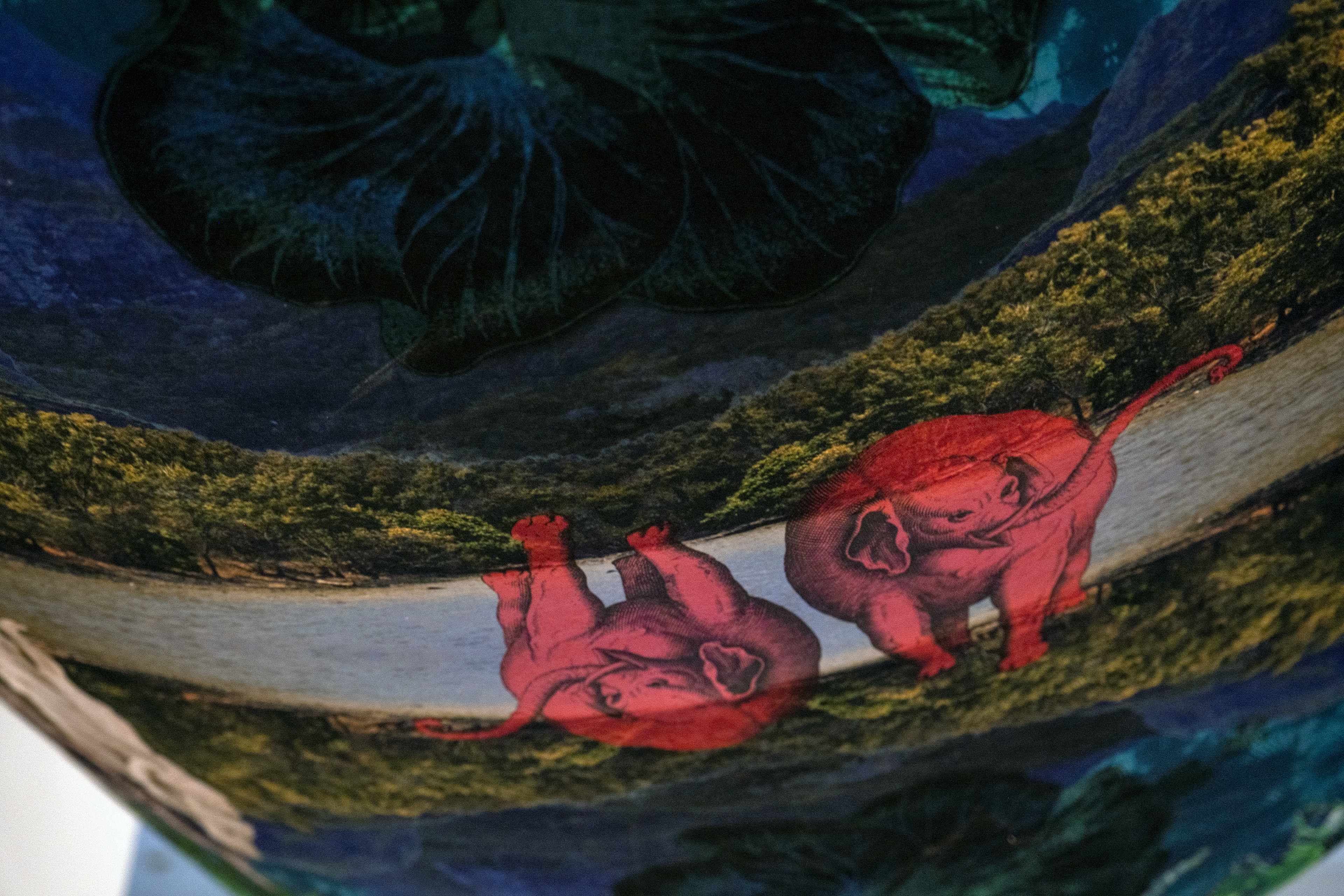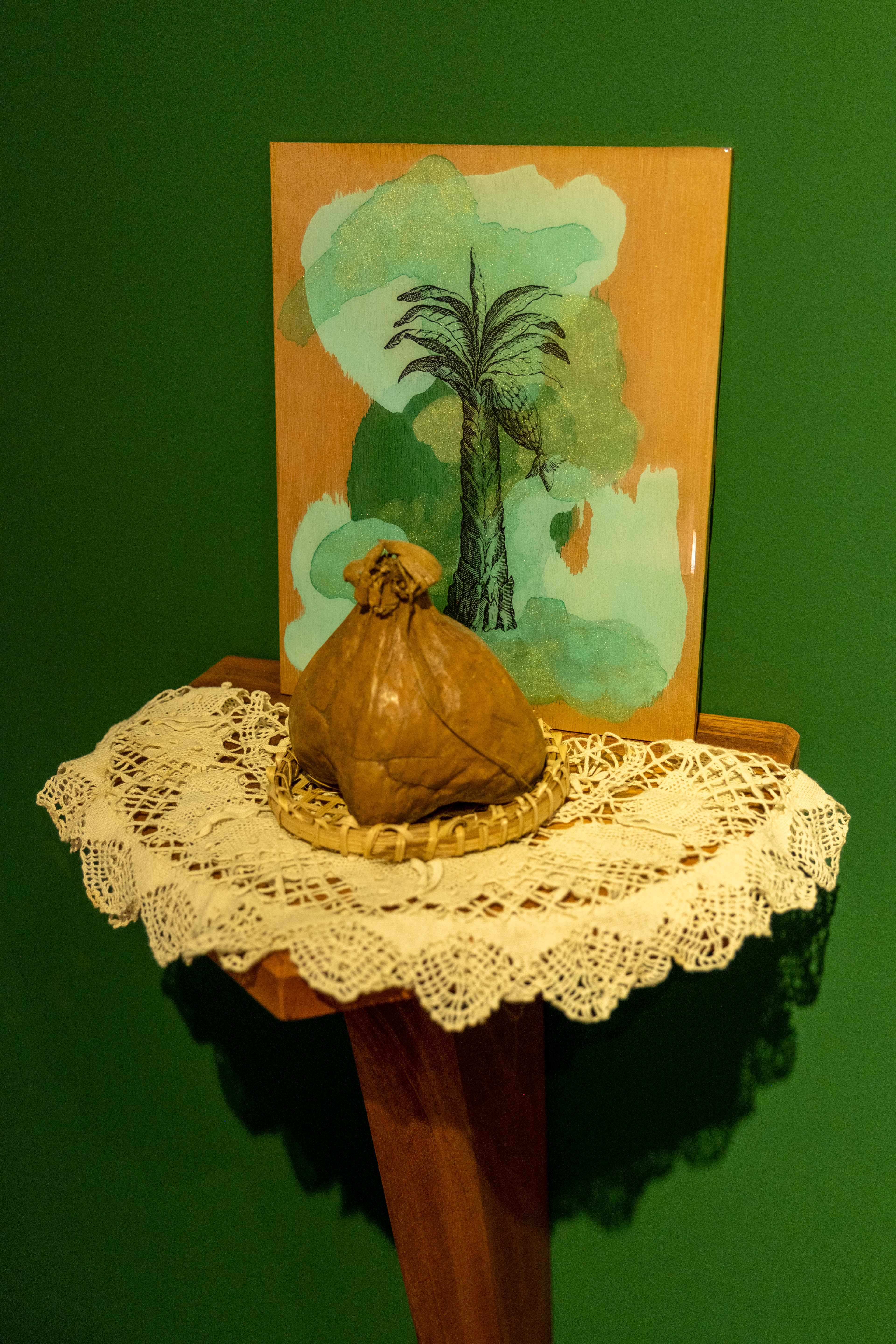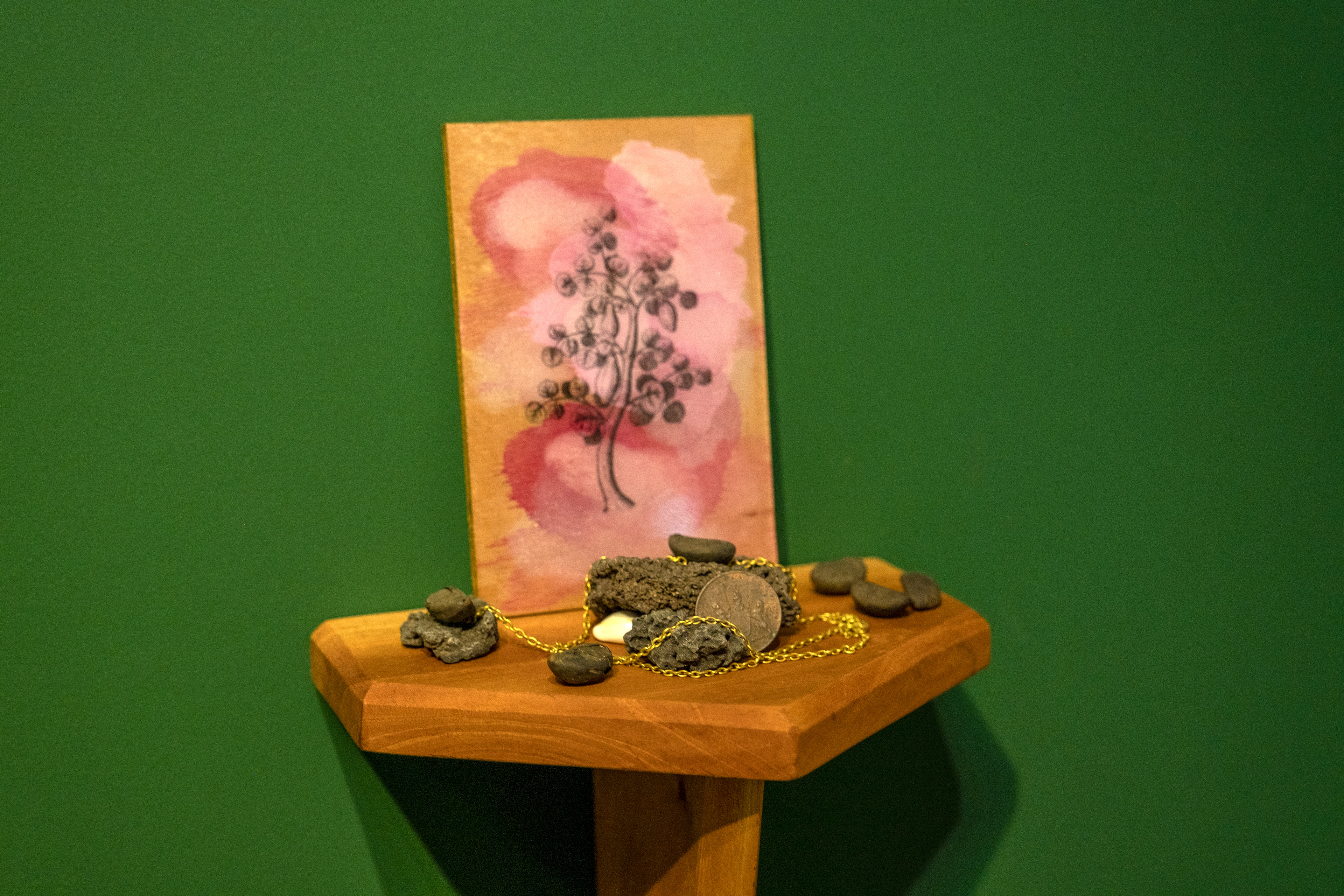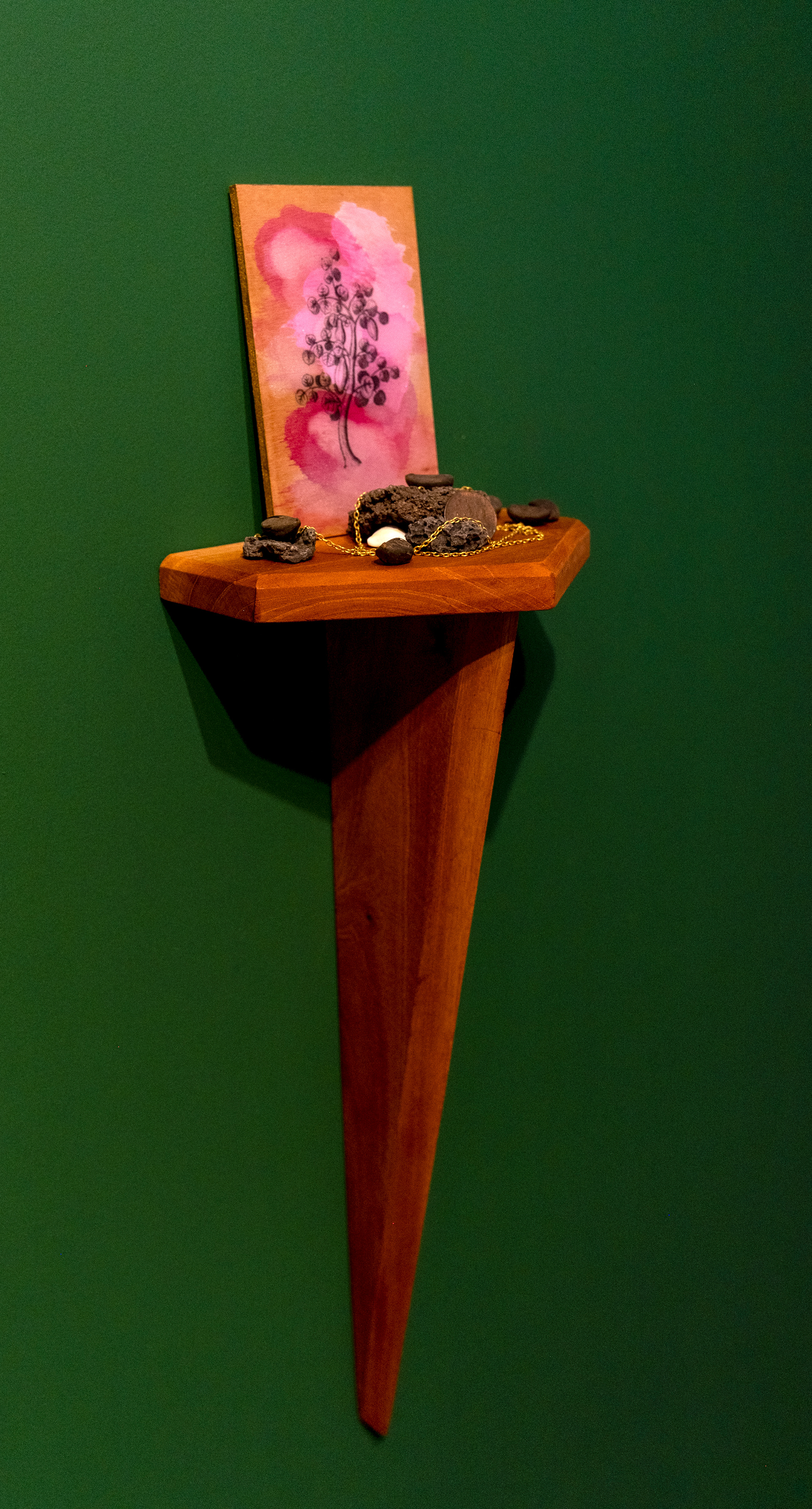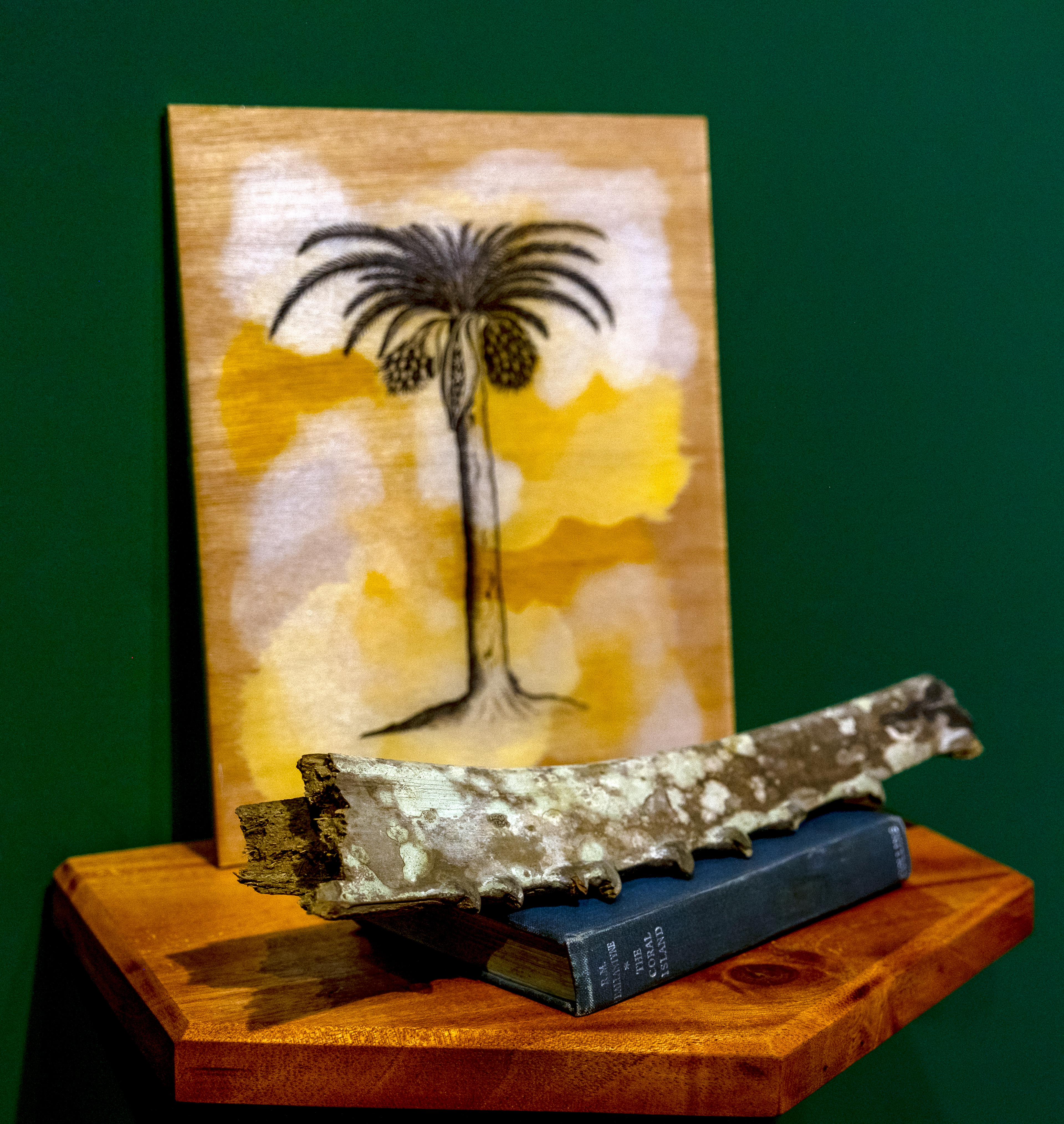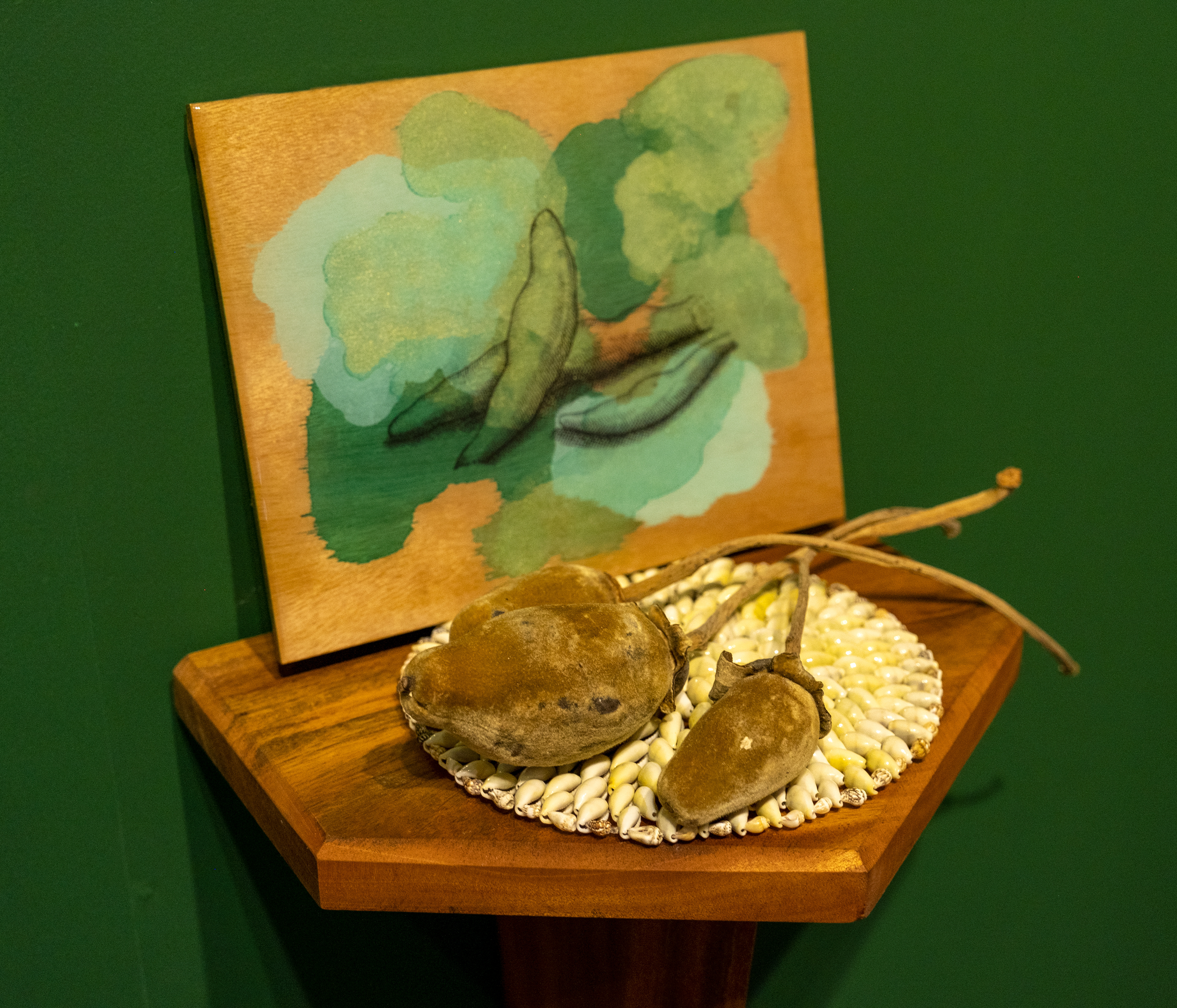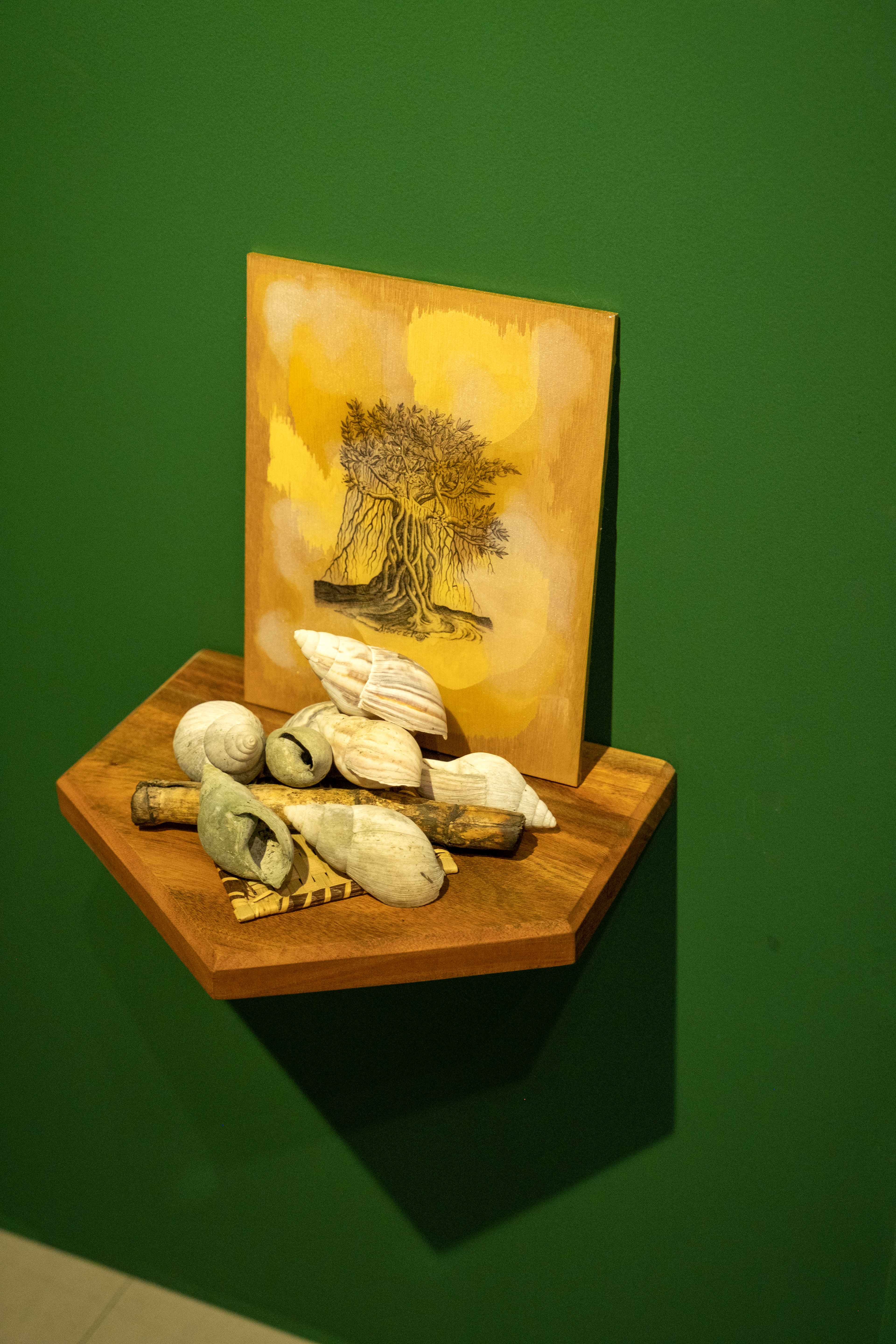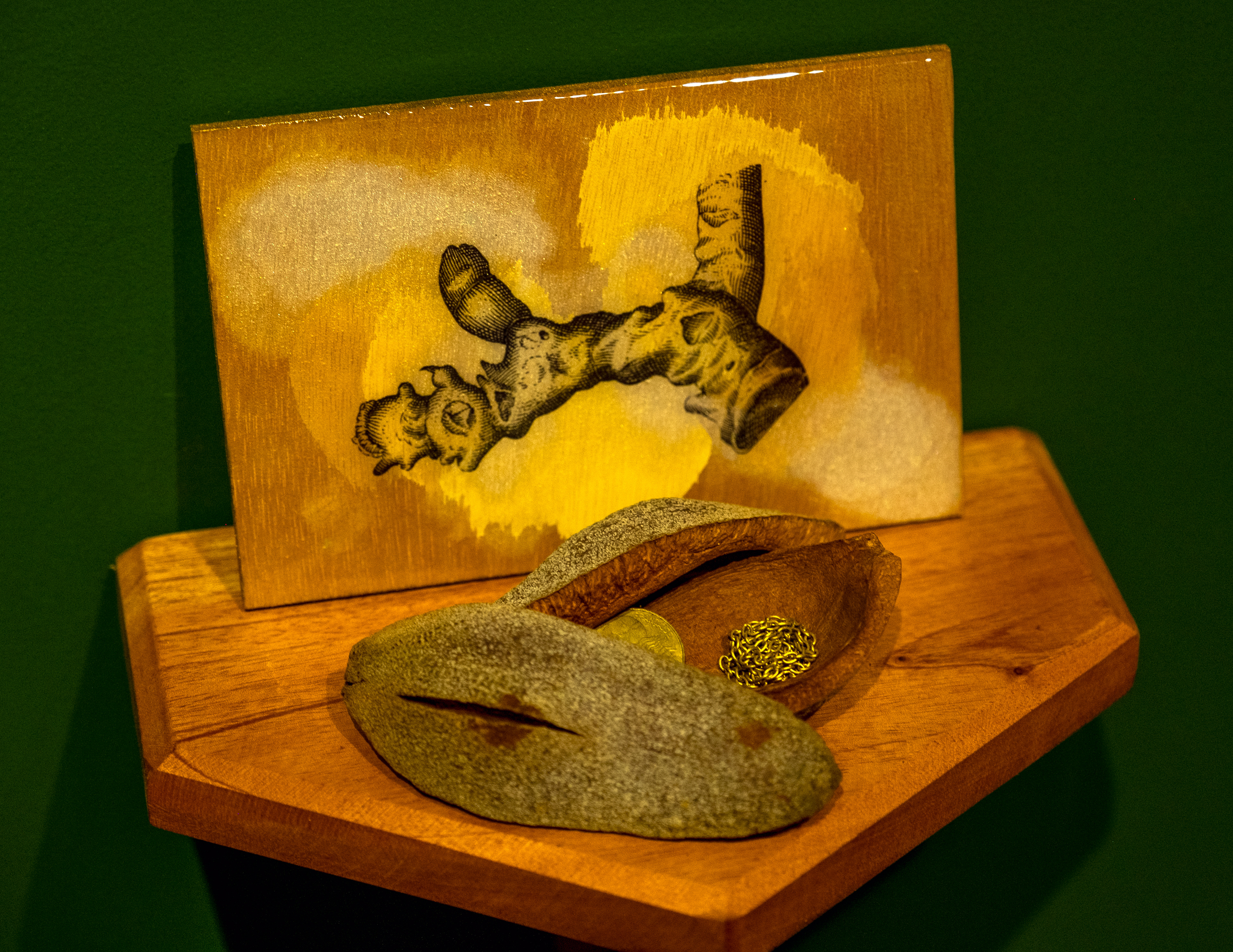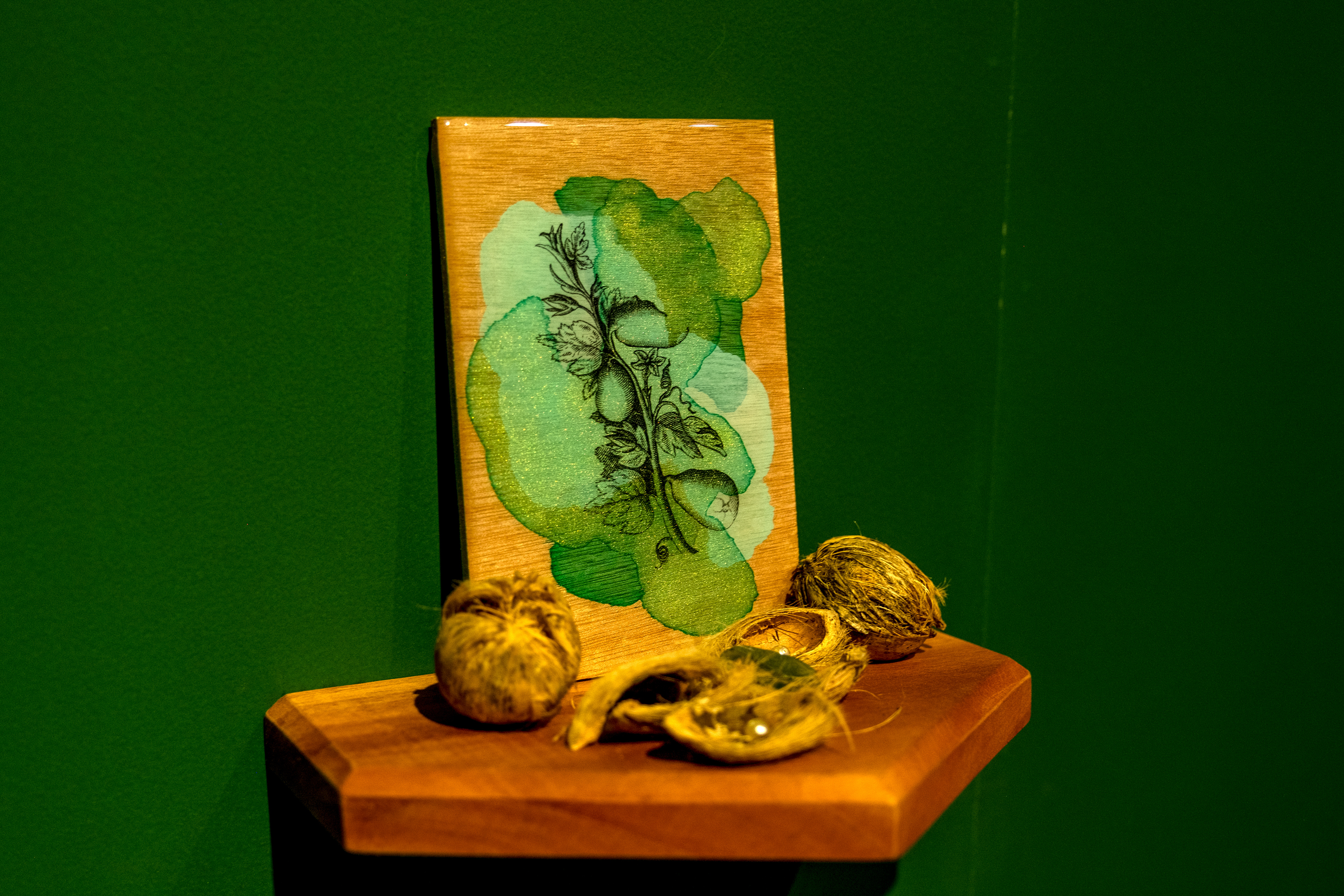An attunement to the oceanic horizon as a passageway of human, botanical, and material culture and economic histories lies at the core of Shiraz Bayjoo’s artistic world. He weaves together a range of creative genres in his projects from photography and film to textile, painting, installation, and collaborative performance. His research-led approach is archipelagic as he focuses on island geographies such as Mauritius, Madagascar, and the United Kingdom—and their imprints within public and familial archives.
Seeds, pods and shells sit on wooden altars as memorials of survival and resistance in maroon settlements. Shiraz Bayjoo notes, The work Botanical Shrines (2024), focuses on the network of botanical gardens, which evolved with every diminishing moment of the indigenous forests they extracted from. In Mauritius its forest interior rapidly vanished in the 17th-18th century, making way for the plantation, and reducing the sanctuary afforded to the maroons who escaped them. We, the descendants of the communities, through the misery of slavery and indenture, displaced to these tranquil islands, shared it all too briefly with the true indigenous of our islands, the Dodo, the Blue Parrot, the Red Wren, the Hibiscus Fragilis, or the Lonely Palm who bore the first irrevocable erasure.”
Adjacently, the latest iteration of fabric-based installation Latab Laren (2024) in Mauritian Creole ‘The Queens Table’ uses Kanga cloths as ‘coda’ gesturing to Indian Ocean transfers and placements, as a pattern culture in motion layered with archival photography from opposing shorelines of the western Indian Ocean, following the monsoon from South Africa to Mauritius, to Madagascar, and up the Swahili coast.
